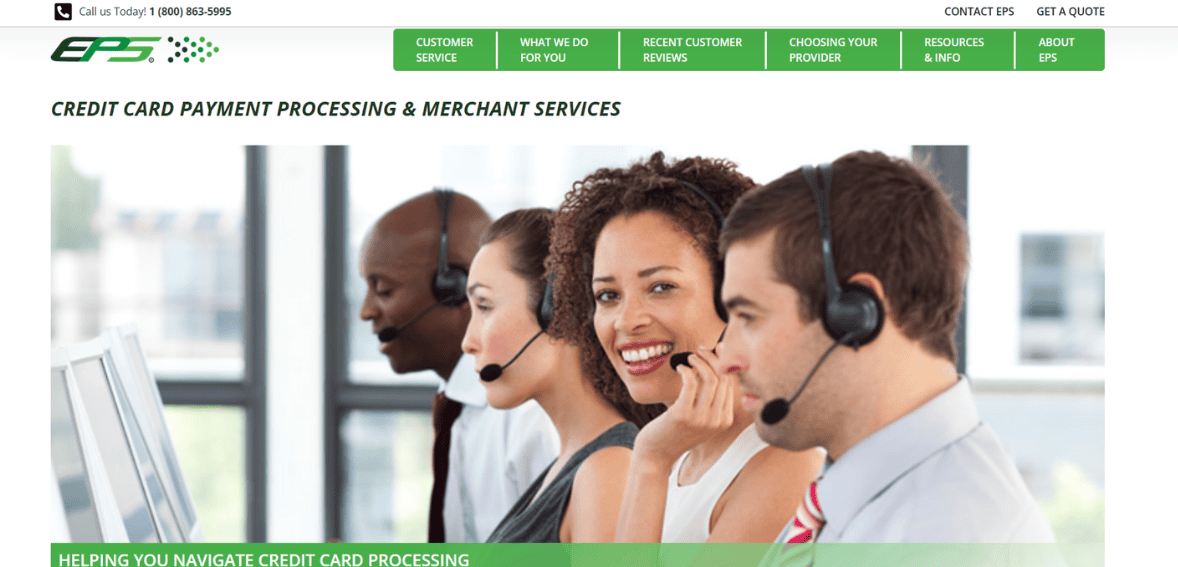Electronic Payment Systems Review

Electronic Payment Systems is a merchant services provider that allows businesses to accept payments across multiple channels. In an era where electronic transactions are the norm, businesses can no longer view payments as a back office process. Customers expect seamless, secure and instant checkouts whether they are paying in person, through mobile wallets or online. EPS positions itself as a partner for businesses that want to meet this expectation by offering a range of services from traditional point of sale terminals to online payment gateways. Lets read more about Electronic Payment Systems Review.
The payments landscape is changing fast with contactless technology, digital wallets and recurring subscription billing. Merchants have to comply with industry standards, manage transaction costs and integrate flexible systems into their existing operations. It tries to balance reliability and flexibility by providing stable infrastructure, security support and scalable solutions. Like any provider, its effectiveness depends on the specific needs and priorities of the business using it.
This review looks at EPS across multiple areas including company background, core solutions, hardware support, e-commerce functionality, security, pricing, customer support and overall market relevance.
Company Background and Industry Position | Electronic Payment Systems Review
EPS has been in the payments industry for decades, building a reputation mainly among small to mid-sized businesses. Unlike newer fintech companies that operate on a flat rate, app based model, it is a traditional merchant account structure. This means formal underwriting, merchant agreements and service contracts which has been the norm in payment processing. Its longevity has helped it build industry relationships and a stable base of merchants that value predictability over innovation.
The payments industry is crowded and competitive. It competes with global giants like Fiserv, Elavon and Global Payments as well as disruptive fintech platforms like Square, PayPal and Stripe. While the big names get more attention with their technology driven tools, EPS appeals to businesses that value established processes, infrastructure and hands on support. For merchants that view payment acceptance as a critical function rather than a playground for experimentation, EPS provides a solid foundation.
The flip side of this is visibility. Compared to newer, more marketed platforms, EPS doesn’t have brand recognition among startups and digital native companies. In fast paced industries where recognition and innovation matters this can be a problem. But for industries like healthcare, hospitality and traditional retail that value compliance, regulatory stability and consistent service, EPS has credibility that only comes with being in the market for decades. Its challenge today is to stay relevant in a world that demands both traditional reliability and modern flexibility.
Core Payment Processing Solutions
At its core EPS allows merchants to accept payments through all major card networks including Visa, Mastercard, American Express and Discover. It also supports ACH processing for direct bank transfers so merchants can accept a variety of payment types in-store and online. The backbone of its processing infrastructure is stability which is critical for businesses that can’t afford downtime or transactional inconsistencies.
For physical store environments EPS offers countertop terminals, mobile readers and support for contactless payments like Apple Pay and Google Pay. These options cater to changing consumer expectations around speed and convenience. For digital businesses it provides an online gateway with features like recurring billing, tokenization and hosted payment pages. Together these tools cover the basics of modern payment acceptance.
Where EPS falls short is on value added features. Competitors like Stripe or Square highlight analytics dashboards, customer insights and advanced integrations that help businesses go beyond accepting payments to using transaction data for growth strategies. EPS delivers on core processing but stops short of positioning payments as a business intelligence tool. For many merchants this isn’t a problem as reliability trumps the bells and whistles. But for digitally ambitious businesses EPS may feel limited in scope.
Merchant Account Setup and Onboarding
Setting up an account with EPS follows the traditional underwriting model. Merchants must go through a credit review, provide financial history and submit documentation for risk assessment. This can take several days to weeks depending on the complexity of the business and whether it’s a high risk industry. For startups or unconventional industries the process can feel demanding compared to the instant approvals offered by fintech platforms.
The advantage of EPS’s model is long term stability. Businesses that pass underwriting are far less likely to encounter account holds or unexpected closures which are common complaints with instant approval processors. It ensures risk is managed upfront so there’s less chance of downstream disruption. For businesses that value consistency this structured approach is reassuring.
However the onboarding process doesn’t suit every merchant. Businesses that need to start processing within 24 hours often find EPS’s process too slow. While the onboarding team helps with paperwork and compliance the perception of slowness compared to fast moving competitors can deter time sensitive merchants. This is the ongoing trade off between thorough vetting and immediate convenience.
POS Systems and Hardware Support
EPS supports a range of point-of-sale solutions designed for various business settings. From traditional countertop terminals to mobile readers, it ensures compatibility with EMV chip cards, magnetic stripes, and contactless payments. For merchants operating in brick-and-mortar locations, this provides flexibility to meet customer expectations across payment formats.
EPS also offers integrated POS systems that connect payments with sales management and inventory tracking. These full-featured systems help retailers and restaurants manage transactions holistically, although their design leans more toward reliability than innovation. Equipment can be leased or purchased outright, depending on business preference and budget.
While EPS provides a strong foundation for physical payments, its systems appear conservative compared to modern cloud-based POS solutions. Businesses looking for built-in loyalty programs, customer engagement tools, or seamless integration with third-party apps may find EPS lacking. For merchants that only need stable, compliant, and efficient hardware, EPS’s offering works well. Those seeking advanced, all-in-one business ecosystems may prefer newer POS innovators.

Online Payment Gateway and E-Commerce Features
As digital commerce continues to grow, EPS’s online gateway provides essential support for businesses selling products and services online. Its gateway integrates with shopping carts, enables hosted payment pages, and supports recurring billing for subscription models. Tokenization features ensure sensitive cardholder data is protected during online transactions.
It offers a degree of customization, allowing merchants to embed its gateway into existing websites or rely on hosted solutions for easier deployment. This flexibility appeals to both small businesses looking for simplicity and larger companies with unique system requirements. Security is a core strength here, as merchants can process online payments with confidence in compliance standards.
That said, EPS faces stiff competition in the e-commerce space. Providers like Shopify Payments or Stripe are deeply integrated into the digital economy, offering developer-friendly APIs and plug-ins that streamline the process for online merchants. EPS provides the necessary infrastructure but lacks the developer-first approach that digitally native companies often demand. For traditional businesses expanding into e-commerce, EPS’s solutions are adequate. For tech-forward businesses, however, it can feel limiting.
Security, Compliance, and Fraud Protection
Security is non-negotiable in payment processing, and EPS maintains compliance with PCI DSS standards. The company employs encryption and tokenization to safeguard customer data during transactions. These measures ensure sensitive information is protected against interception and unauthorized use.
Fraud protection tools are available, including velocity checks, filters, and monitoring systems that flag suspicious transactions. While effective, these tools are not as sophisticated as the AI-driven fraud systems offered by some fintech competitors. They provide a reliable baseline but may not cover the most complex fraud patterns seen in high-risk industries.
One of EPS’s advantages is its support for PCI compliance guidance. Many businesses struggle with the complexity of meeting industry requirements, and EPS provides resources to assist merchants in maintaining compliance. While feedback on support quality varies, the overall framework ensures businesses can operate securely within established guidelines. EPS’s emphasis on compliance reflects its traditional model of prioritizing trust and stability over experimental innovation.
Pricing Structure and Fees
Pricing is often the deciding factor when selecting a merchant services provider. EPS employs traditional pricing models such as interchange-plus or tiered rates depending on merchant type and volume. This means fees vary depending on the card type, transaction method, and risk profile of the business. In addition to per-transaction fees, EPS merchants may encounter monthly account charges, statement fees, PCI compliance fees, and gateway costs.
Compared to flat-rate providers like Square, this structure can feel more complex. However, for larger merchants processing significant volumes, interchange-plus pricing can result in lower effective rates. The challenge lies in transparency. Some merchants report unexpected fees or confusing contract terms, while others praise EPS for delivering competitive costs once terms are clearly understood.
Contracts typically involve multi-year commitments with early termination penalties, which may discourage businesses seeking flexibility. For small businesses or startups, these agreements may feel restrictive, particularly when compared to the month-to-month structures offered by newer players. Overall, EPS’s pricing can be advantageous for established merchants with consistent volume but less appealing to businesses prioritizing simplicity and flexibility.
Customer Support and Service Quality
Customer support is one of the most crucial elements of a payment processing relationship. It offers support via phone, email, and online resources. Its model emphasizes direct communication with representatives rather than relying entirely on automated channels. This appeals to merchants who value the reassurance of speaking to knowledgeable staff when issues arise.
Feedback on service quality, however, is mixed. Some merchants highlight the responsiveness of EPS’s support team and appreciate the personalized assistance. Others report frustration with long wait times or inconsistent problem resolution. Documentation and training resources exist but are less extensive compared to the robust self-service knowledge bases offered by larger competitors.
For businesses that prioritize personal relationships and one-on-one support, EPS provides value. For those that prefer fast, self-service solutions, its resources may feel limited. This reflects the company’s broader identity as a traditional provider focused on human support rather than automated efficiency.

Integrations and Compatibility
Modern businesses often require their payment systems to integrate with accounting software, ERP platforms, and e-commerce tools. It supports a range of integrations that help streamline financial management and reduce manual reconciliation. Its solutions are designed to be compatible with many legacy systems, which is beneficial for businesses that rely on established infrastructure.
However, EPS does not offer the same level of developer-friendly APIs and plug-and-play integrations found in fintech platforms like Stripe. This makes it less appealing to companies that prioritize automation, customization, and technology-driven workflows. For businesses that prefer stability and compatibility with older systems, EPS is more than sufficient. For digital-first businesses seeking advanced integrations, it may fall short.
Strengths of EPS
EPS’s strengths lie in its reliability, long-standing industry experience, and broad range of payment solutions. Its infrastructure emphasizes stability, ensuring merchants experience consistent uptime and secure transaction handling. The structured underwriting process reduces the likelihood of account freezes, providing reassurance to merchants that prioritize consistency.
EPS also serves a wide range of industries including retail, hospitality, healthcare, and e-commerce. Its flexibility across physical and digital environments adds to its appeal. Personalized customer support remains a distinguishing feature, especially for merchants that prefer human interaction over automated systems. Overall, it succeeds in offering solid, dependable service for businesses that value traditional reliability.
Limitations and Potential Drawbacks
EPS also presents several limitations. Its pricing structure, while potentially cost-effective for large merchants, can be confusing for smaller businesses. The presence of multiple fees, combined with multi-year contracts, reduces flexibility and may discourage businesses that want straightforward arrangements.
Technology is another challenge. EPS’s tools do not always match the innovation and advanced features offered by fintech competitors. Merchants seeking detailed analytics, advanced mobile capabilities, or developer-friendly environments may find EPS restrictive. While it meets core processing needs, it does not position itself as a technology leader in the payments space.
These drawbacks do not make EPS unsuitable, but they highlight its best-fit scenarios. It works well for businesses that value compliance, stability, and structured support. It is less appealing to businesses seeking cutting-edge innovation or contract flexibility.
EPS for Different Business Sizes
EPS’s suitability varies depending on business scale. For small businesses, onboarding and contract requirements may feel burdensome compared to instant-approval fintech alternatives. However, once approved, small merchants benefit from EPS’s stability and reliable hardware support.
Mid-sized businesses often find EPS most advantageous. They have the volume to justify interchange-plus pricing and the operational need for integration with accounting and ERP systems. For these merchants, EPS strikes a balance between traditional reliability and manageable costs.
Large enterprises may use EPS as part of a broader payment strategy but often prefer providers with more advanced global capabilities. EPS’s offerings are best suited as supplementary support rather than primary solutions for global corporations. Overall, EPS fits best with businesses that prioritize consistency and compliance rather than innovation.
Final Verdict on EPS
Electronic Payment Systems represents a traditional yet dependable option in the crowded merchant services market. It offers reliable processing infrastructure, wide hardware support, compliance guidance, and personalized customer service. Its long-standing presence in the industry highlights stability and trustworthiness, appealing to merchants that value consistency.
At the same time, EPS faces competition from fintech firms that emphasize transparency, quick onboarding, and advanced technology. While EPS may not always provide the most innovative or cost-effective solution, it excels in delivering payment fundamentals. For businesses that prioritize compliance, structured support, and proven reliability over cutting-edge features, it remains a strong and dependable choice.
FAQs
Q1. What types of businesses benefit most from EPS?
It caters to industries such as retail, hospitality, healthcare, and e-commerce. It works best for businesses that value stability, structured onboarding, and traditional merchant account models rather than instant-approval fintech systems.
Q2. Does EPS provide PCI compliance support for merchants?
Yes, it assists merchants in maintaining PCI DSS compliance. It uses features like encryption and tokenization to protect customer data and offers resources to help businesses navigate compliance requirements.
Q3. How does EPS compare with newer payment processors in terms of pricing?
It employs traditional interchange-plus and tiered pricing models. For high-volume businesses, this can result in competitive rates. However, for smaller businesses, the complexity and additional fees may feel less predictable compared to the flat-rate pricing favored by newer fintech providers.





